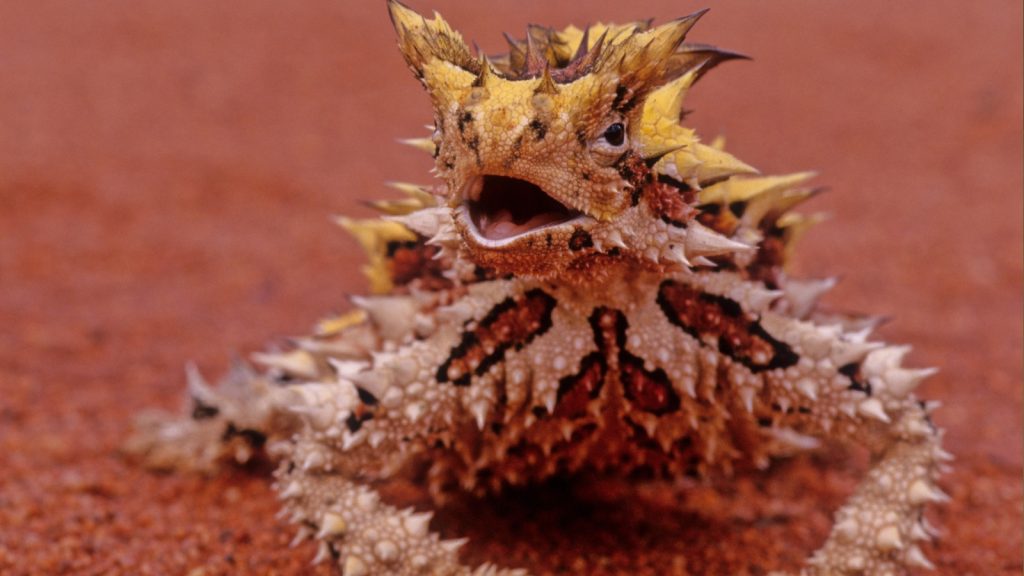Thorny devils, with their spiky appearance and unique adaptations, are among the most fascinating creatures in Australia’s deserts. These small lizards have evolved remarkable features to survive in harsh, arid environments. Despite their fearsome name and appearance, thorny devils are harmless to humans. From their water-harvesting skin to their unusual walking style, these lizards are full of surprises. I was amazed by just how extraordinary these weird little creatures really are.
Masters of Disguise
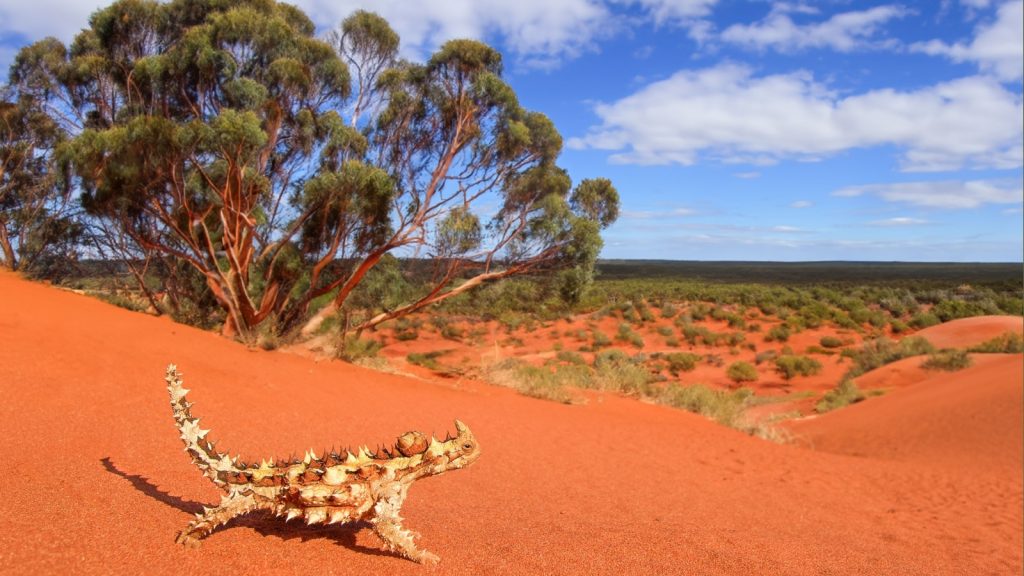
Thorny devils have an incredible ability to change color. They can shift from pale yellow to dark red, depending on their temperature and mood. This color-changing skill helps them regulate their body temperature and blend in with their surroundings, making them masters of desert camouflage.
Walking Optical Illusion
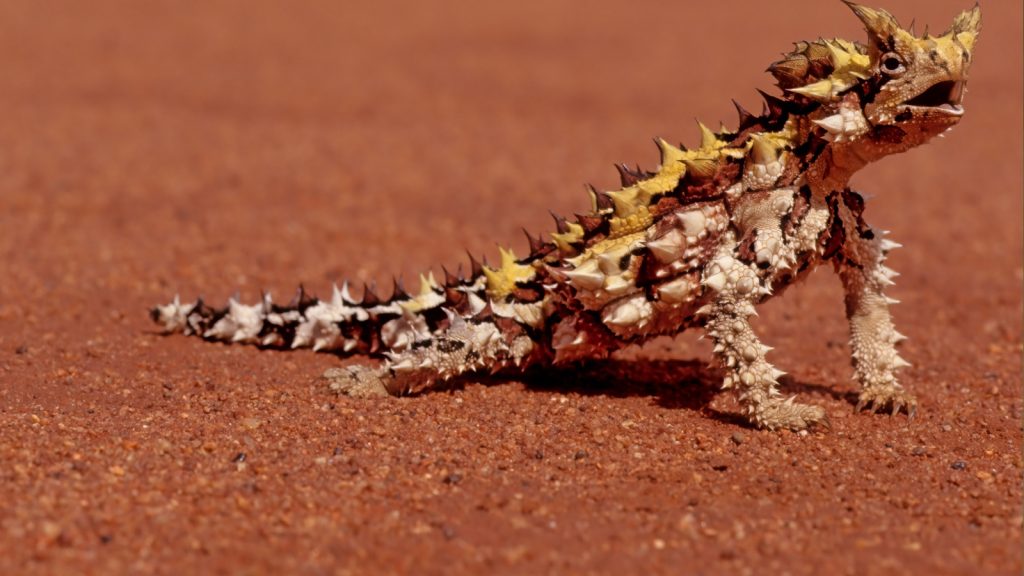
These lizards have a unique way of moving. They rock back and forth as they walk, creating an illusion that makes them hard for predators to track. This distinctive gait, combined with their spiky appearance, helps confuse potential threats and keeps the thorny devils safe.
Ant-Eating Specialists
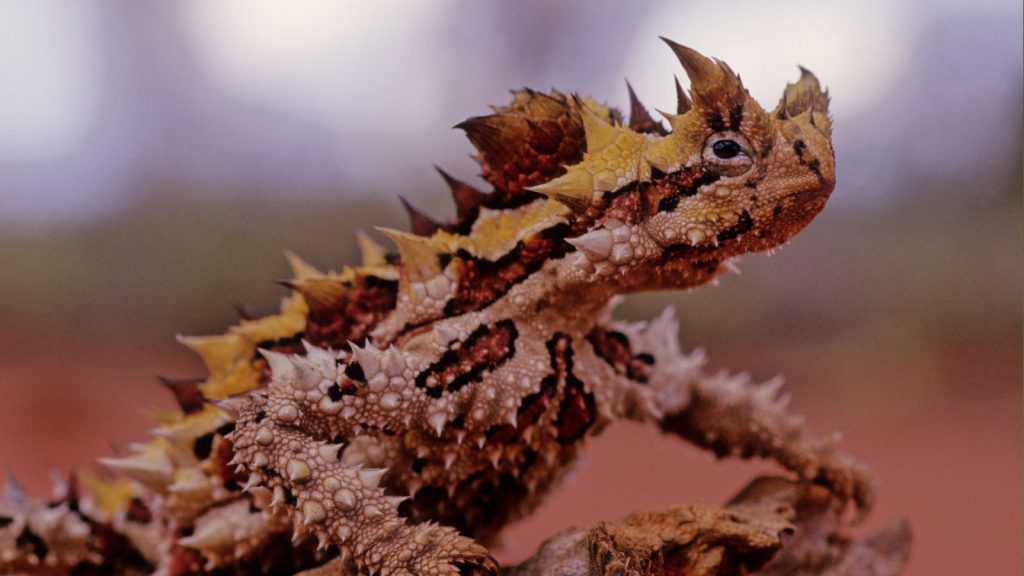
Thorny devils have a highly specialized diet, feeding exclusively on ants. They can eat up to 3,000 ants per day! Their tongue is sticky and can flick out at lightning speed to catch their tiny prey, making them incredibly efficient ant-eaters.
Water-Harvesting Skin
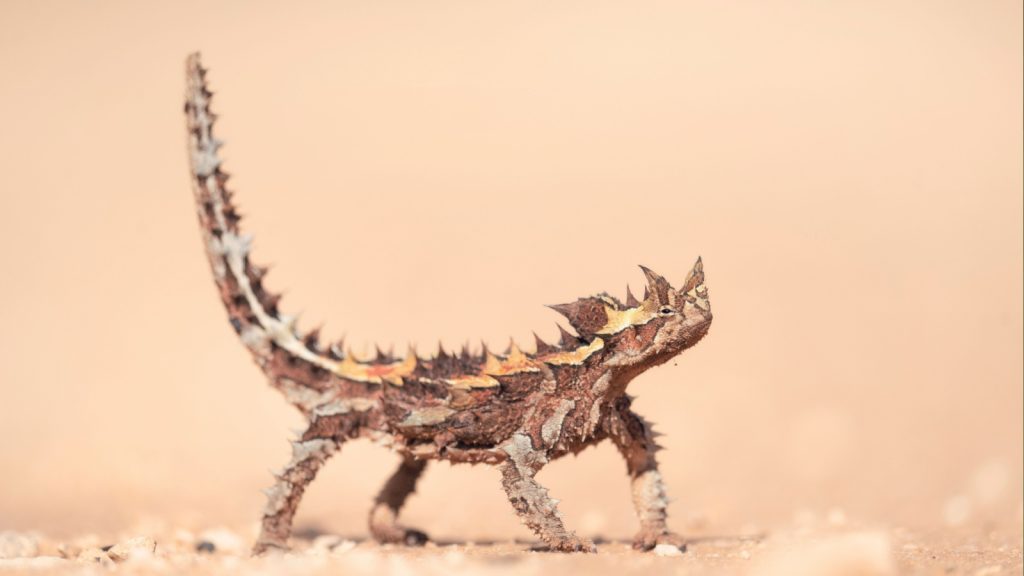
One of the thorny devil’s most amazing adaptations is its ability to collect water through its skin. Tiny channels between their scales can capture morning dew or rainfall, directing the water to their mouth. This unique feature allows them to drink without needing to find standing water in the desert.
False Head Trick
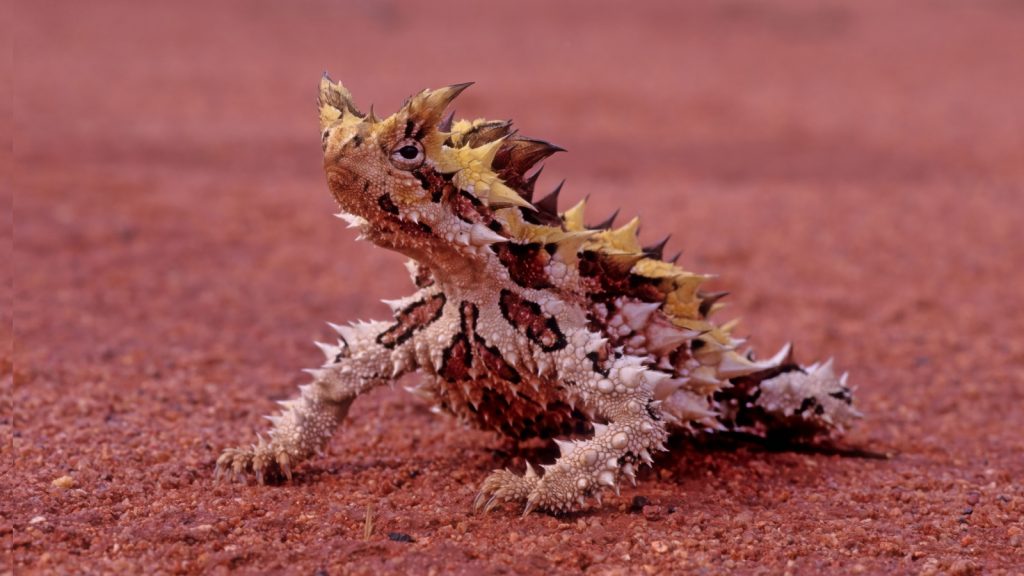
Thorny devils have a fake head on the back of their neck. When threatened, they tuck their real head between their front legs and present the false head to predators. This clever decoy helps confuse attackers and gives the lizard a chance to escape.
Spikes Aren’t Just for Show
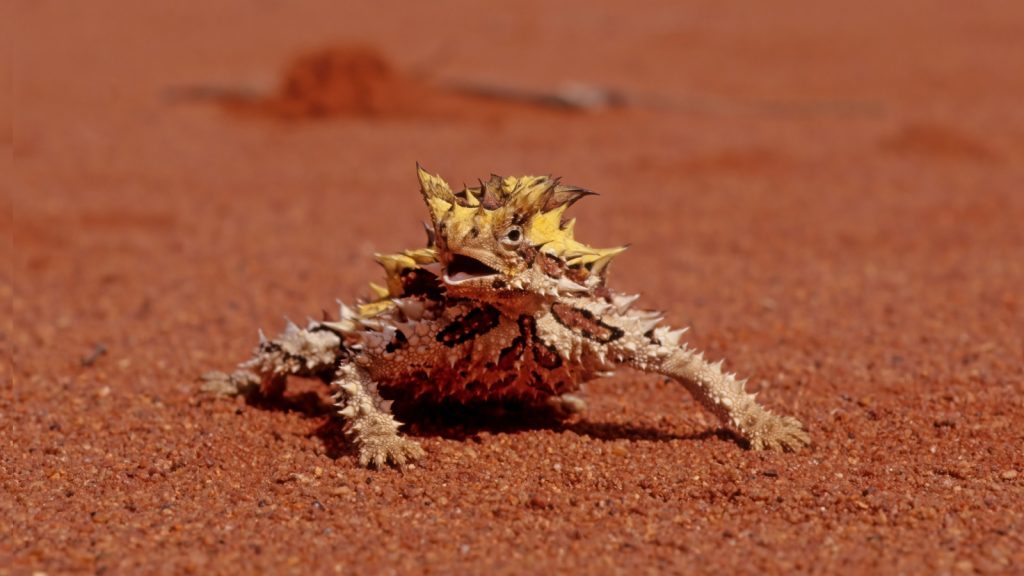
While their spikes look intimidating, they’re actually quite soft and flexible. These spines serve multiple purposes: they help collect water, regulate body temperature, and make the lizard look bigger to scare off predators. It’s a great example of nature’s multifunctional design.
Slow and Steady Wins the Race
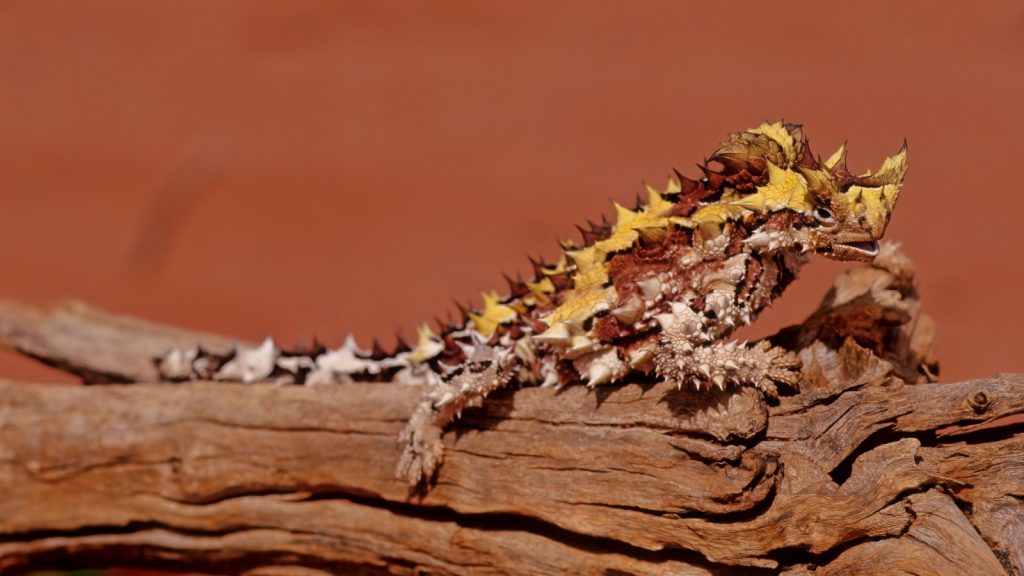
Thorny devils are not known for their speed. They move very slowly, often freezing in place when they sense danger. This slow lifestyle helps them conserve energy in their harsh desert environment and makes them harder for predators to spot.
Masters of Stillness
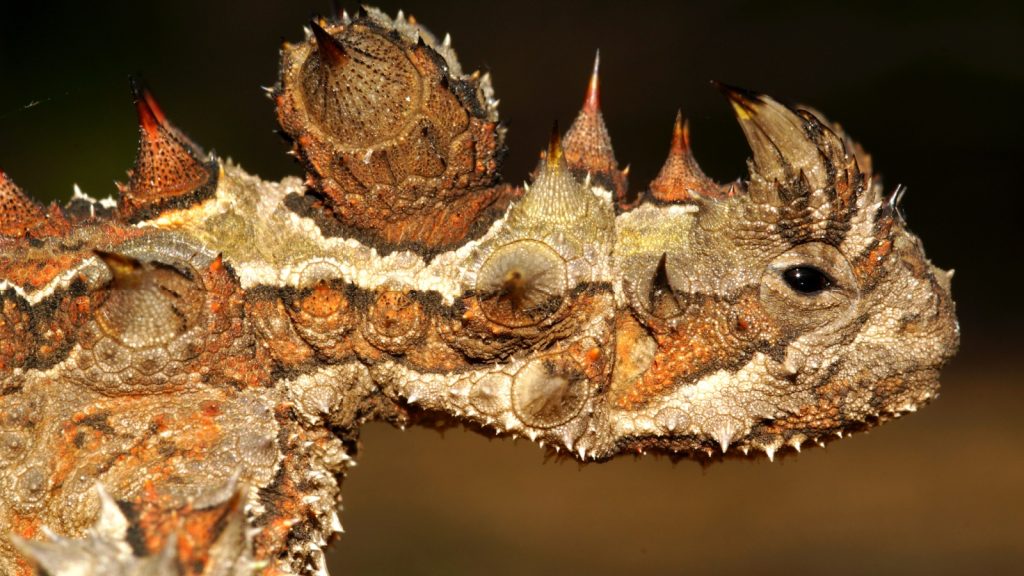
These lizards can remain motionless for long periods. When they sense a threat, they often freeze in place, sometimes for hours. This patience helps them avoid detection by predators and conserve energy in the hot desert.
Desert-Dwelling Specialists
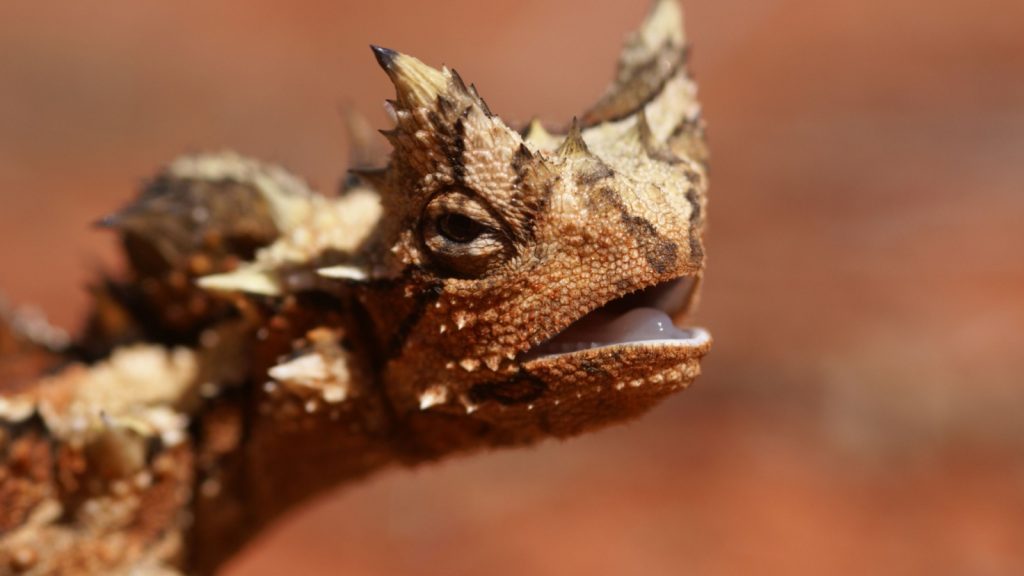
Thorny devils are perfectly adapted to life in Australia’s arid regions. They can survive in temperatures ranging from near freezing at night to over 100°F (37°C) during the day. Their ability to thrive in such extreme conditions is a testament to their remarkable adaptations.
Unique Breeding Habits
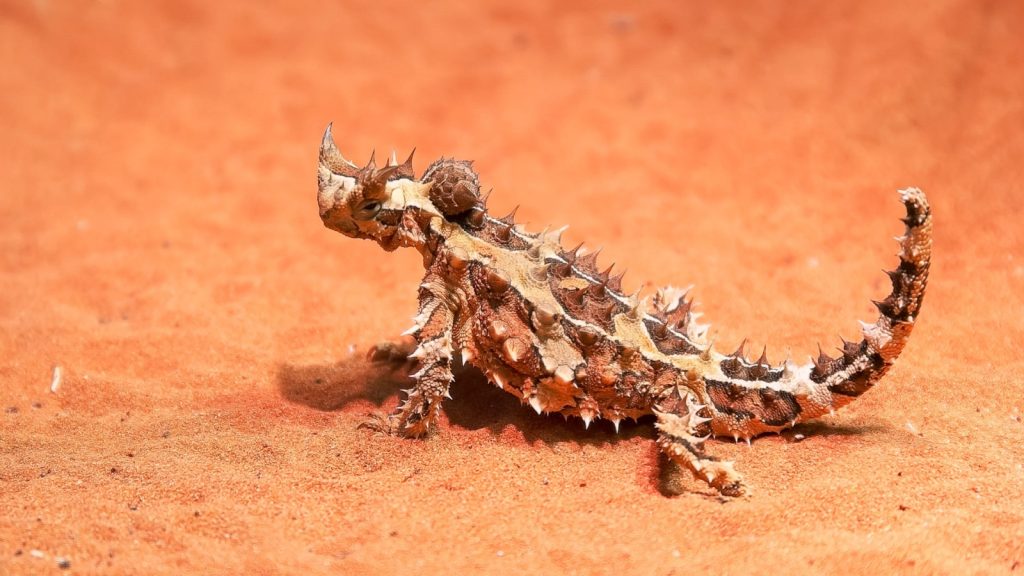
Female thorny devils lay 3-10 eggs in a nest dug about 30 cm deep in the sand. After laying, they cover the nest and leave the eggs to incubate on their own. The baby lizards hatch after about 3-4 months and are immediately independent.
Not Actually Devils
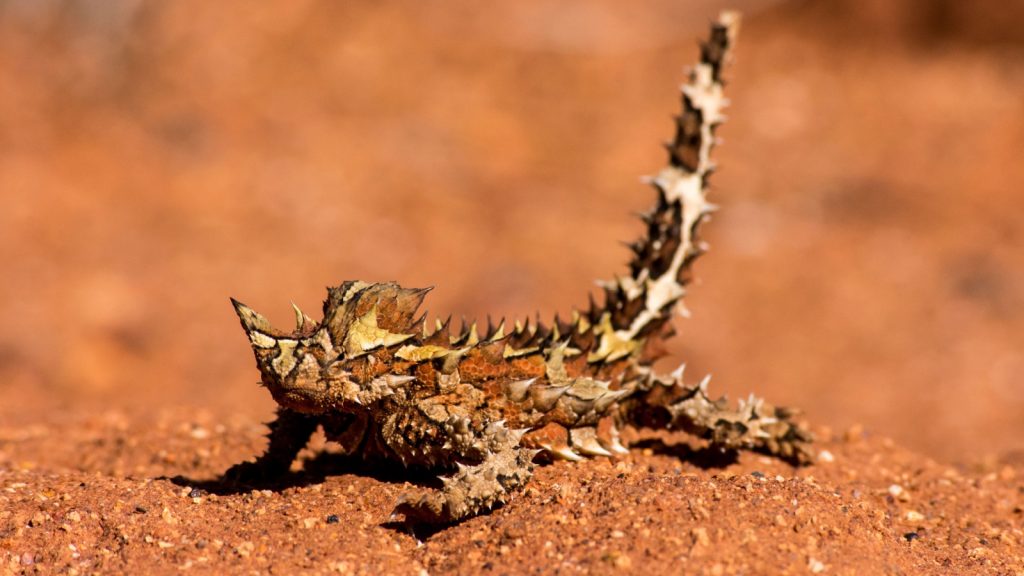
Despite their name, thorny devils are harmless to humans. They got their devilish name from their appearance, not their behavior. In fact, they’re quite shy and will often try to avoid confrontation by remaining still or slowly walking away.
Ancient Lineage

Thorny devils belong to an ancient lizard family called Agamidae, which dates back to when Australia was still part of the supercontinent Gondwana. This means they’ve been evolving and adapting to Australia’s changing landscape for millions of years.
Moisture-Seeking Behavior
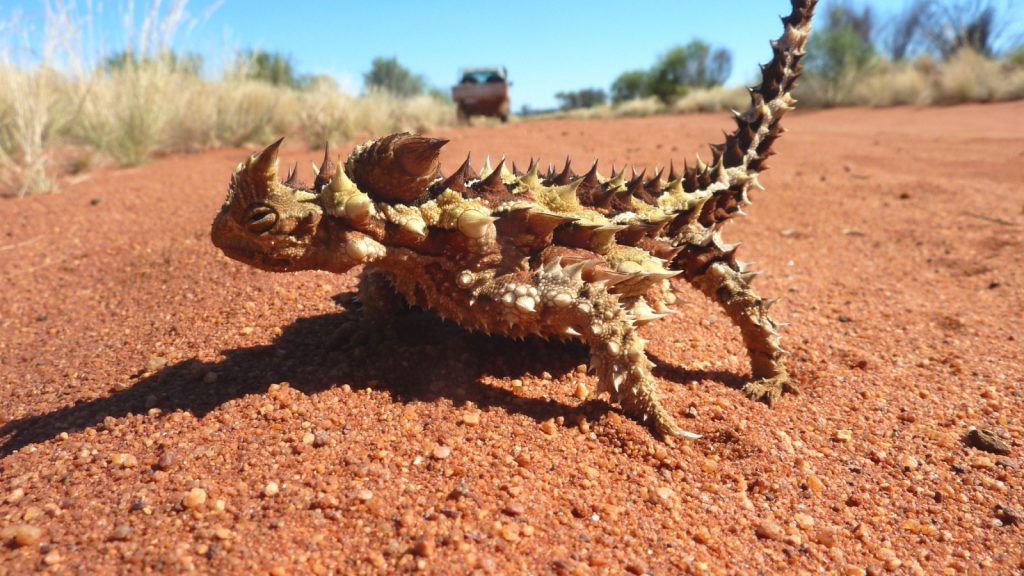
In addition to their water-harvesting skin, thorny devils have another trick for staying hydrated. They often stand in damp sand, allowing moisture to be drawn up through their feet. This clever adaptation helps them survive in areas where rainfall is scarce.
Population Mysteries
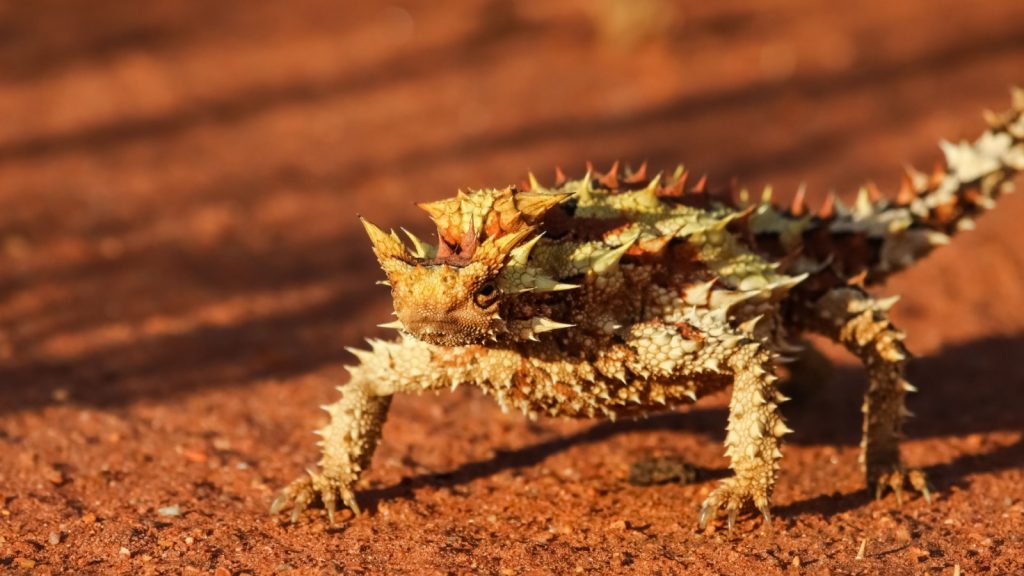
Despite being well-known, thorny devils are actually quite mysterious to scientists. Their population numbers are not well understood, and they’re considered near threatened in some areas. Their secretive nature and desert habitat make them challenging to study.
Cultural Significance
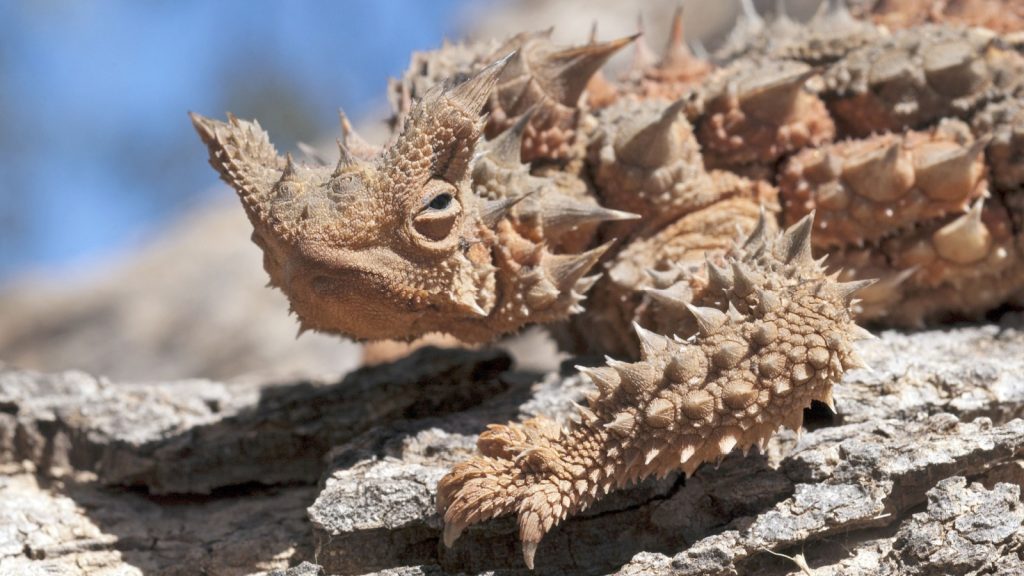
Thorny devils hold a special place in Aboriginal Australian culture. They feature in Dreamtime stories and are often depicted in indigenous art. This cultural importance adds another layer to the conservation efforts aimed at protecting these unique lizards.

